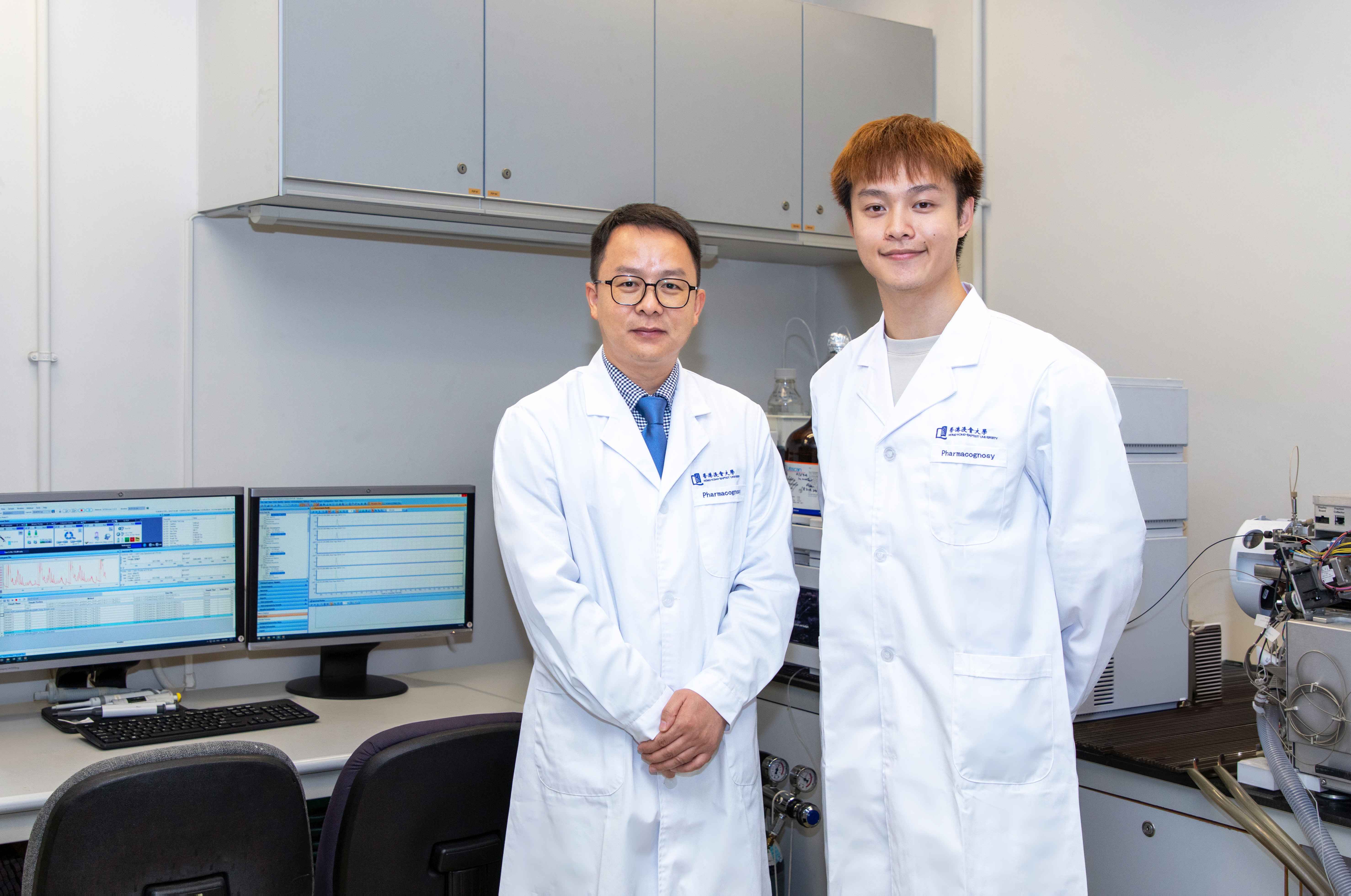Press Release
HKBU develops new approach for accurate and efficient inspection of sulfur-treated food and Chinese herbal medicines
Monday, 29 July 2024
A research team at Hong Kong Baptist University (HKBU) has developed a new approach for the inspection of sulfur-treated food and Chinese herbal medicinal products through a new chemical marker called tryptophan sulfonate. This approach is more accurate, rapid and efficient for large sample quantities compared to the current testing method. The study marks a potential advancement in food safety and quality assurance, providing the industry with a robust tool for inspecting sulfur-treated food and Chinese herbal medicinal products.
The research findings have been published in the international scientific journal Food Chemistry.
More accurate and efficient test in need
Sulfur treatment, including sulfur fumigation and the addition of sulfites, is a common preservation method employed in the food and Chinese herbal medicinal industries. However, excessive consumption of preservative sulfites in food and Chinese herbal medicinal products can lead to respiratory symptoms and compromised nutritional value and safety.
Currently, sulfite test is the most commonly used method for inspecting residual sulfites in sulfur-treated food. Nevertheless, sulfites are chemically unstable, sometimes leading to inaccurate results. Sulfite test is also labour-intensive and time consuming. It can only analyse one sample at a time, making high-throughput analysis challenging. Furthermore, sulfite test may yield false-positive results for food rich in endogenous sulfur-containing components such as garlic and onion.
Tryptophan sulfonate as a chemical marker
In search of a more accurate and efficient testing approach, Dr Xu Jun, Assistant Professor of the Teaching and Research Division of the School of Chinese Medicine at HKBU, and his research team identified a chemical compound called tryptophan sulfonate in sulfur-fumigated samples using untargeted metabolomics. Tryptophan sulfonate is formed when tryptophan, a naturally occurring amino acid in many foods, reacts with sulfite.
The research team conducted comparative experiments on 20 food products using the tryptophan sulfonate test. It was found that tryptophan sulfonate is present consistently in all sulfur-fumigated food samples but not in non-fumigated samples. The finding demonstrated the potential of tryptophan sulfonate as a specific chemical marker for distinguishing sulfur-treated and non-sulfur-treated food products.
Tryptophan sulfonate test outperforms sulfite test
To evaluate the applicability of tryptophan sulfonate in the inspection of sulfur-treated food products and Chinese herbal medicines, the team applied tryptophan sulfonate and sulfite tests to 50 food and Chinese herbal medicine samples collected from markets. It was found that tryptophan sulfonate test and sulfite test results were mostly identical except for six food samples, including corn starch, dried star fruit, dried mango, snow fungus, garlic and onion. The tryptophan sulfonate test result was positive in corn starch, dried star fruit, dried mango and snow fungus, but negative in garlic and onion; sulfite test yielded opposite results.
As garlic and onion are known to contain endogenous sulfur-containing components, it is evident that the positive sulfite test result is not a consequence of sulfur-treatment. Tryptophan sulfonate test is therefore a more reliable approach for detecting sulfur-treatment for food items with intrinsic sulfur-containing constituents.
False-negative due to instability of sulfites
For the discrepancies between the two tests on the other four food samples, the research team hypothesised that the sulfite test may produce false-negative results due to the instability of sulfites caused by high temperature and prolonged storage of the food samples.
In a separate experiment, the research team found that sulfite levels in sulfur-fumigated ginger, yam and ginseng declined by around 90% to 100% after nine months of storage, and reduced by around 50% to 72% after heating, while the tryptophan sulfonate levels remained stable. They concluded that the instability of residual sulfites could lead to false-negative results. In contrast, tryptophan sulfonate exhibited greater stability over heat and storage, suggesting it serves as a better chemical marker for sulfur-treatment inspection.
High throughput screening made possible
On the testing procedure, tryptophan sulfonate test is faster and more automated. It involves a direct ultrasonic extraction for one hour and mass spectrometry analysis for two minutes, allowing the parallel handling of batches of samples. In contrast, sulfite test requires 2.5 hours of manual operation, including reflux extraction and titration for a single sample test.
Dr Xu Jun said: “Our research showed that tryptophan sulfonate serves as a highly distinctive chemical marker, enhancing the accuracy and efficiency of sulfur-treated food and Chinese herbal medicine inspection. It is especially suitable for high throughput screening of large samples size. It demonstrates the potential in offering a more cost-effective alternative for the existing test protocol adopted by the industry.”
Moving forward, the research team hopes to further develop the tryptophan sulfonate test for commercial application.

